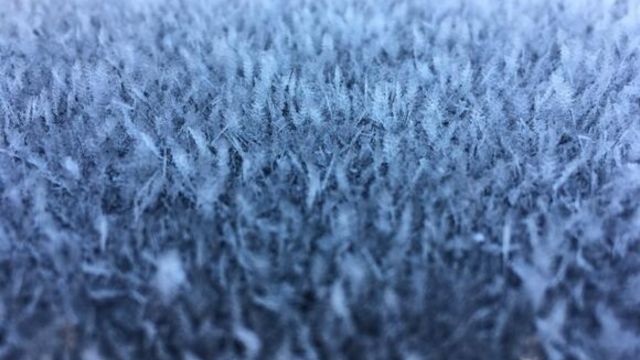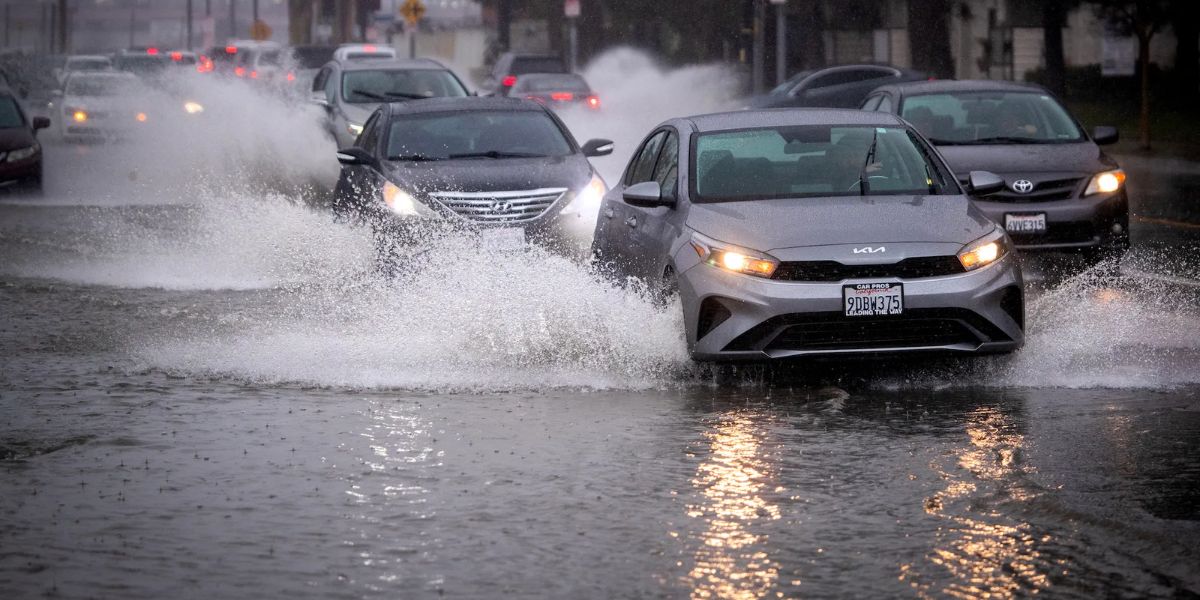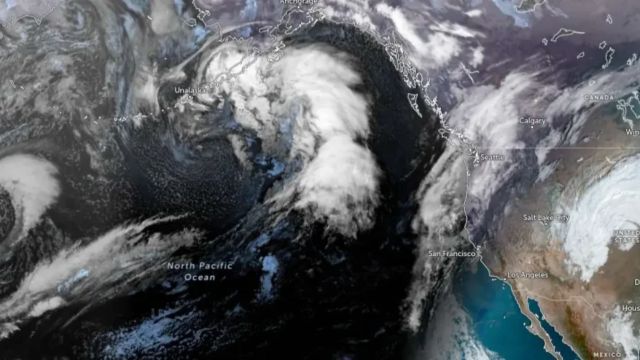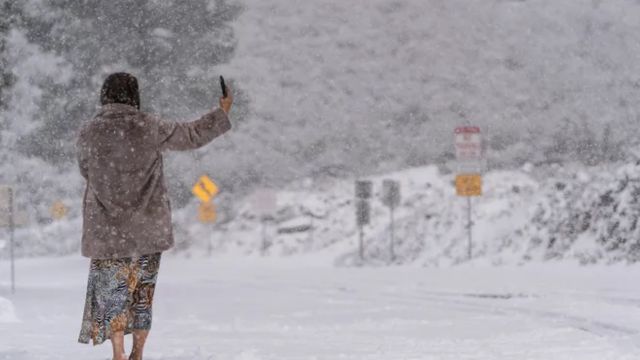MJP –
Northern California residents woke up to frosty conditions Saturday morning, with temperatures plunging below freezing in many areas. The coldest reading came from Fort Hunter Liggett’s Argyle Road, where temperatures hit a frigid 20 degrees.
Clear skies and crisp air dominate today’s forecast, but a brief rainstorm is expected Sunday night into Monday.
The National Weather Service extended a Freeze Warning through Sunday morning for the southern Salinas Valley and interior mountains of Monterey and San Benito Counties. Forecasters will evaluate whether other regions require similar alerts.
Looking ahead, temperatures are set to rise slightly later in the week, though more rain is possible next weekend. Bundle up and stay weather-aware as the chilly weather persists.
Northern California is facing a significant shift in weather, with freezing conditions set to persist through the weekend, bringing cold temperatures, rain, and even the possibility of snow in higher elevations. As a potent weather system moves across the region, the National Weather Service (NWS) has issued multiple advisories, warning residents of dangerously cold temperatures, heavy rain, and the threat of black ice and flooding.

Extended Freezing Temperatures Across Northern California
A cold front that initially swept through Northern California earlier this week will remain in place for several more days, keeping temperatures well below freezing in many areas, particularly at night. For low-lying areas like Sacramento, Chico, and Redding, overnight temperatures are expected to hover around 32°F or lower. In mountainous regions and higher elevations, the mercury could dip to 20°F or even lower in some places.
The ongoing cold snap is likely to persist through Saturday and Sunday, with freezing temperatures continuing into the early part of next week. This extended period of cold is rare for this time of year, especially in the typically milder areas of the central valley and coastal regions.
Heavy Rain and Potential Snowfall
Winter Weather Warnings Issued Nationwide as Snow Expected This Weekend
In addition to the freezing cold, Northern California is bracing for heavy rain beginning Friday and continuing through the weekend. Up to 2 inches of rain could fall in the lower elevations, with 3-4 inches expected in mountainous areas, including the Sierra Nevada. The rainfall is expected to bring much-needed relief to drought conditions but will also increase the risk of flash flooding, especially in areas with poor drainage and saturated soil.
At higher elevations, where temperatures are expected to stay below freezing, rain will turn to snow. The Sierra Nevada could see several inches of snow above 3,000 feet, and some areas at 5,000 feet and above could receive 12 inches or more of snow. Travel in these areas is likely to be disrupted, and chain controls will be in effect on major highways, including Interstate 80 and Highway 50.
Flooding Risk and Flash Flood Watches
With the combination of heavy rain and already saturated ground, the risk of flash flooding is high, particularly in urban areas and places that are prone to rapid runoff. Streets in cities like San Francisco, Oakland, and Sacramento could experience localized flooding, while rivers and streams in the Sierra foothills could swell quickly, threatening communities downstream. The Russian River and Napa River are among the areas expected to see increased flow, which could lead to flooding.
The National Weather Service has issued flash flood watches and flood warnings for several counties across Northern California. Residents are urged to avoid driving on flooded roads and to stay away from low-water crossings and areas prone to flash floods.
Icy Conditions and Hazardous Travel
One of the most concerning aspects of this storm is the potential for icy roads. Freezing rain, mixed with heavy rainfall, will create slick and hazardous driving conditions, especially on overpasses and bridges, which freeze more easily than regular roads. Black ice is also a concern, particularly in the early morning hours when temperatures will be at their lowest.
In the Sierra foothills and northern mountains, the combination of rain, snow, and freezing temperatures could create treacherous travel conditions on major routes like Interstate 5, Interstate 80, and Highway 50. Drivers planning to travel in these areas should check road conditions before heading out and carry chains if necessary.
Wind Chill and Dangerous Cold
In addition to the freezing temperatures, wind chill will make the air feel even colder. Gusty winds, especially in mountainous areas and along the coast, could drive the apparent temperature down to single digits or low teens, posing a serious risk of hypothermia for those exposed to the elements for prolonged periods.
Even in lower-lying areas, wind chill factors will make temperatures feel colder than the actual air temperature. For example, in cities like Sacramento and Chico, temperatures may feel closer to 25°F due to wind gusts of up to 30 mph.
What to Do to Stay Safe
With freezing temperatures, rain, snow, and the risk of flooding and icy roads, it’s important to take the necessary precautions to stay safe in Northern California. Here are some tips:
- Stay Informed: Monitor weather alerts from the National Weather Service and local authorities. Keep a battery-powered weather radio handy in case of power outages.
- Prepare for Power Outages: The combination of ice, snow, and high winds could lead to downed trees and power lines, resulting in power outages. Make sure you have flashlights, batteries, extra blankets, and non-perishable food in case you lose power.
- Drive Carefully: If you must travel, ensure your car is prepared for winter conditions. Check the tires, windshield wipers, and antifreeze levels. Use low beams in rain and snow, and reduce speed on wet or icy roads.
- Protect Your Pipes: With the extended period of freezing temperatures, ensure that your pipes are properly insulated. Let faucets drip during the night to prevent freezing.
- Keep Warm: Wear layered clothing, including hats, gloves, and scarves, to protect yourself from the cold. Avoid prolonged exposure to cold air, and seek shelter immediately if you feel numbness or tingling in your fingers, toes, or face.
- Flood Safety: Avoid driving or walking through flooded areas. If you live near a river or creek, stay aware of the forecast and be prepared to evacuate if necessary.
Conclusion
Northern California is in for a challenging weather weekend, with freezing temperatures, heavy rain, snow, and the risk of flooding and icy roads.
The combination of rain, snow, and sub-freezing conditions presents a serious risk to public safety, and residents are urged to stay prepared and take precautions.
By staying informed, keeping warm, and avoiding hazardous travel, you can help ensure your safety as this powerful storm system moves through the region.




